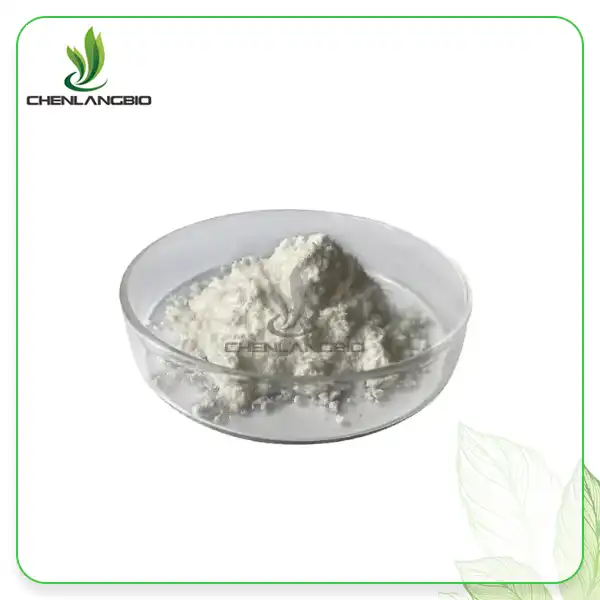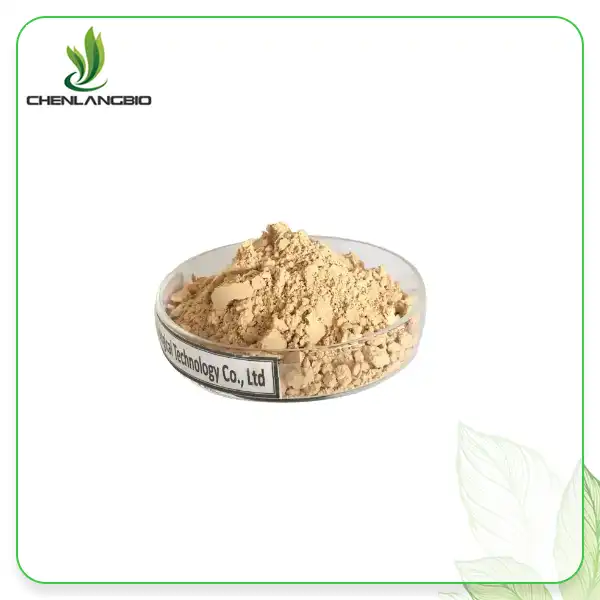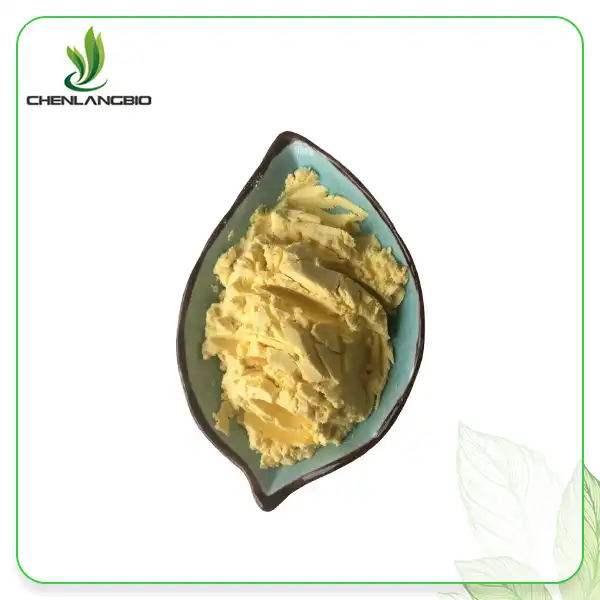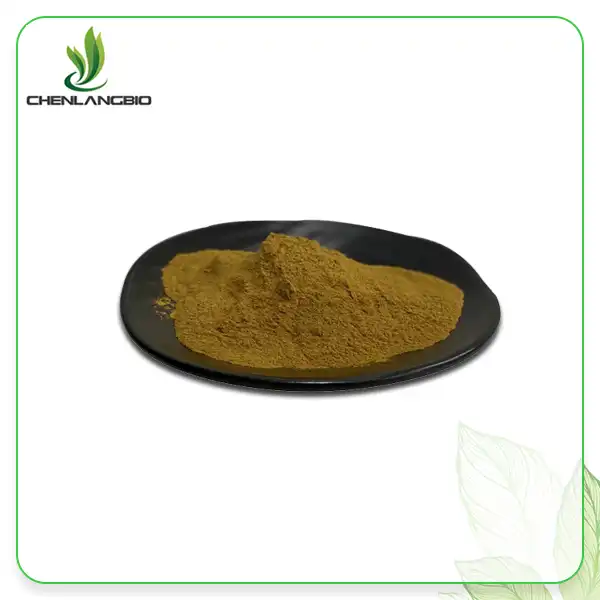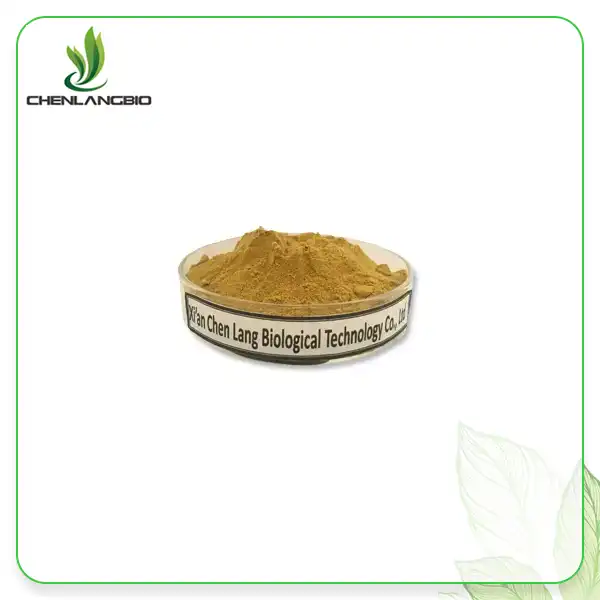What is Ectoin Made of
2024-09-29 15:58:36
Ectoine a remarkable compound found in nature, has gained significant attention in various industries due to its exceptional properties. This blog post delves into the composition and origins of ectoin, exploring its unique characteristics and the organisms responsible for its production. We'll uncover the fascinating world of extremophiles and how they've adapted to harsh environments by synthesizing this protective molecule. By understanding what ectoin is made of, we can better appreciate its applications in cosmetics, pharmaceuticals, and biotechnology. Join us on this journey to discover the molecular secrets behind ectoin's stress-shielding abilities and its potential to revolutionize multiple fields.
The Molecular Structure of Ectoin
Chemical Composition
Ectoin, scientifically known as (S)-2-methyl-1,4,5,6-tetrahydropyrimidine-4-carboxylic acid, is a small, cyclic amino acid derivative. Its molecular formula is C6H10N2O2, with a molecular weight of 142.16 g/mol. The compound features a six-membered ring structure containing two nitrogen atoms, making it a member of the tetrahydropyrimidine family. This unique arrangement contributes to ectoin's exceptional stability and its ability to interact with water molecules effectively.
Structural Features
The ectoin molecule possesses several key structural features that contribute to its functionality. Its cyclic nature provides stability, while the presence of a carboxylic acid group and an amine group allows for diverse interactions with surrounding molecules. The methyl group attached to the ring further influences its behavior in solution. These structural elements work in concert to create ectoin's distinctive properties, including its ability to form a hydration shell around proteins and other biomolecules.
Stereochemistry
Ectoine exhibits stereoisomerism, with the naturally occurring form being the S-enantiomer. This specific stereochemistry is crucial for its biological activity and its ability to interact with cellular components. The three-dimensional arrangement of atoms in ectoin allows it to fit precisely into molecular pockets and binding sites, enhancing its effectiveness as a protective agent against various environmental stressors.
Natural Sources of Ectoin
Halophilic Bacteria
Ectoin is primarily produced by halophilic bacteria, organisms that thrive in high-salt environments. These remarkable microbes have evolved to synthesize ectoin as a compatible solute, allowing them to maintain osmotic balance and protect their cellular components from the harsh conditions of their habitat. Examples of ectoin-producing halophiles include species from the genera Halomonas, Chromohalobacter, and Marinococcus. These bacteria accumulate high concentrations of ectoin in their cytoplasm, sometimes reaching levels of up to 20% of their dry weight.
Extremophiles
Beyond halophiles, ectoin is also found in other extremophiles – organisms adapted to extreme environmental conditions. These include thermophiles (heat-loving bacteria), psychrophiles (cold-tolerant microbes), and xerophiles (organisms adapted to dry conditions). The ability to produce ectoin has been observed in diverse bacterial species inhabiting hot springs, polar regions, and arid deserts. This widespread distribution highlights ectoin's versatility as a stress-protective compound across various challenging environments.
Marine Microorganisms
The marine environment is another rich source of ectoin-producing microorganisms. Numerous species of marine bacteria have been identified as ectoine producers, particularly those inhabiting coastal areas, estuaries, and deep-sea habitats. These marine microbes utilize ectoin to cope with fluctuations in salinity, temperature, and hydrostatic pressure. The discovery of ectoin in marine organisms has opened up new avenues for biotechnological applications, especially in the development of marine-derived cosmetic and pharmaceutical products.
Biosynthesis of Ectoin
Enzymatic Pathway
The biosynthesis of ectoin involves a series of enzymatic reactions that convert the amino acid L-aspartate β-semialdehyde into the final ectoin molecule. This process is catalyzed by three key enzymes: L-2,4-diaminobutyric acid transaminase (EctB), L-2,4-diaminobutyric acid acetyltransferase (EctA), and ectoine synthase (EctC). These enzymes work in a coordinated manner to build the ectoin molecule step by step, with each enzyme performing a specific chemical transformation. The genes encoding these enzymes are typically organized in an operon, allowing for coordinated expression and regulation of ectoin production.
Regulation Mechanisms
The biosynthesis of ectoin is tightly regulated in response to environmental conditions. Microorganisms modulate ectoin production based on factors such as osmotic stress, temperature, and nutrient availability. This regulation occurs at both the transcriptional and post-transcriptional levels. Specific regulatory proteins and RNA structures play crucial roles in controlling the expression of ectoin biosynthesis genes. Additionally, feedback inhibition mechanisms help maintain optimal intracellular ectoin concentrations, ensuring efficient resource allocation within the cell.
Metabolic Precursors
The production of ectoin relies on several metabolic precursors derived from central carbon metabolism. The primary starting material, L-aspartate β-semialdehyde, is synthesized from aspartate, which in turn is derived from oxaloacetate in the citric acid cycle. Other important precursors include acetyl-CoA and glutamate, which contribute to various steps in the ectoin biosynthesis pathway. The availability of these precursors can influence the rate and efficiency of ectoin production, making the integration of ectoin biosynthesis with overall cellular metabolism a critical aspect of its natural synthesis.
Conclusion
Ectoine, a remarkable molecule produced by extremophiles, is composed of a unique cyclic structure that enables its extraordinary protective properties. Its natural synthesis in halophilic bacteria and other microorganisms demonstrates nature's ingenious solutions to environmental challenges. Understanding ectoin's composition and biosynthesis paves the way for innovative applications across various industries, from skincare to biotechnology. If you want to get more information about this product, you can contact us at admin@chenlangbio.com.
References
1. Lentzen, G., & Schwarz, T. (2006). Extremolytes: Natural compounds from extremophiles for versatile applications. Applied Microbiology and Biotechnology, 72(4), 623-634.
2. Pastor, J. M., Salvador, M., Argandoña, M., Bernal, V., Reina-Bueno, M., Csonka, L. N., ... & Vargas, C. (2010). Ectoines in cell stress protection: Uses and biotechnological production. Biotechnology Advances, 28(6), 782-801.
3. Reshetnikov, A. S., Khmelenina, V. N., & Trotsenko, Y. A. (2006). Characterization of the ectoine biosynthesis genes of haloalkalotolerant obligate methanotroph "Methylomicrobium alcaliphilum 20Z". Archives of Microbiology, 184(5), 286-297.
4. Kunte, H. J., Lentzen, G., & Galinski, E. A. (2014). Industrial production of the cell protectant ectoine: protection mechanisms, processes, and products. Current Biotechnology, 3(1), 10-25.
5. Czech, L., Hermann, L., Stöveken, N., Richter, A. A., Höppner, A., Smits, S. H., ... & Bremer, E. (2018). Role of the extremolytes ectoine and hydroxyectoine as stress protectants and nutrients: genetics, phylogenomics, biochemistry, and structural analysis. Genes, 9(4), 177.
6. Oren, A. (2008). Microbial life at high salt concentrations: phylogenetic and metabolic diversity. Saline systems, 4(1), 2.
Send Inquiry
Related Industry Knowledge
- What Makes Serrapeptase Powder a Top Pick for Food and Beverage Applications?
- How to Use Saccharomyces Ferment Lysate in Your Routine?
- Sodium Methylesculetin Acetate vs. Other Antioxidants
- Could Ergothioneine Cure Alzheimer's Disease
- What is Ergothioneine Good for
- How Much Green Tea Extract in Green Tea
- What is the Classification of Phytosphingosine
- Is 5-HTP Effective For Anxiety Or Depression?
- What Does Coenzyme Q10 Do for Your Body
- Argireline Acetyl Hexapeptide 8 Anti-Wrinkle




